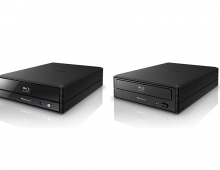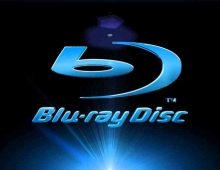
BD9 Licensing Further Delays The Launch of Blu-ray Burners
A delay in the licensing of the BD9 format further delays the availability of the first Blu-ray burners on the market, according to industry sources.
Adopters of the BD technology like Japanese Pioneer, are currenlty working on the licensing of the "BD9" format. This licensing agreement is expected to be concluded by the end of April.
The BD9 format was firstly proposed to the Blu-ray Disc Association by Warner Home Video as a cost-effective alternative to the 25/50GB BD-ROM discs.
At that moment, Warner needed a Blu-ray player that was capable of playing back the BD-9 disc, a 9GB high-definition red-laser disc. This red-laser media can be manufactured on existing DVD production lines generating lower costs of production than the other 25/50GB Blu-ray media. This major advantage convinced BD-supporters to produce a compatible drive.
The DB9 movie discs will be encoded with a high-definition video codec (H.264/VC1), they will be protected by the DVD with AACS/BD+ schemes and they will only playback on Blu-ray Disc players and recorders.
Although the Blu-ray Disc Association has not formally announced the format, it has been accepted by the BDA, according to industry sources.
The licensing of the BD9 format is expected to push the shippment of the first BD burners to the beginning of May.
The first BD burners for PCs were primarly expected to be available in the worldwide market earlier this year, but were delayed by copy porotection issues.
The members of the AACS LA and the Blu-ray Disc Association failed to come up with an early agreement concerning the finalization of the AACS copy protection scheme for Blu-ray. A temporary agreement, called "interim" agreemen was finally released in January.
The release of this interim licensing agreement allowed adoptors of the Blu-ray technology to implement the AACS authorization keys in their hardware. Although such a procedure would normally require only a couple of weeks, it took the hardware makers much longer.
The adoption of the AACS is essential to allow the playback of high-resolution movies on both HD DVD and Blu-Ray drives.
The BD9 format was firstly proposed to the Blu-ray Disc Association by Warner Home Video as a cost-effective alternative to the 25/50GB BD-ROM discs.
At that moment, Warner needed a Blu-ray player that was capable of playing back the BD-9 disc, a 9GB high-definition red-laser disc. This red-laser media can be manufactured on existing DVD production lines generating lower costs of production than the other 25/50GB Blu-ray media. This major advantage convinced BD-supporters to produce a compatible drive.
The DB9 movie discs will be encoded with a high-definition video codec (H.264/VC1), they will be protected by the DVD with AACS/BD+ schemes and they will only playback on Blu-ray Disc players and recorders.
Although the Blu-ray Disc Association has not formally announced the format, it has been accepted by the BDA, according to industry sources.
The licensing of the BD9 format is expected to push the shippment of the first BD burners to the beginning of May.
The first BD burners for PCs were primarly expected to be available in the worldwide market earlier this year, but were delayed by copy porotection issues.
The members of the AACS LA and the Blu-ray Disc Association failed to come up with an early agreement concerning the finalization of the AACS copy protection scheme for Blu-ray. A temporary agreement, called "interim" agreemen was finally released in January.
The release of this interim licensing agreement allowed adoptors of the Blu-ray technology to implement the AACS authorization keys in their hardware. Although such a procedure would normally require only a couple of weeks, it took the hardware makers much longer.
The adoption of the AACS is essential to allow the playback of high-resolution movies on both HD DVD and Blu-Ray drives.





















